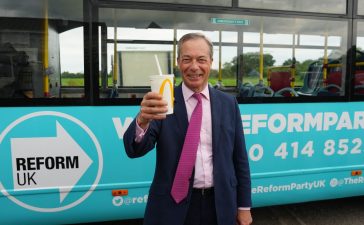The campaign is led by a centralized team of around 20 people based within the Cabinet Office. Meanwhile, around 100 others are working within partner organizations or in other parts of the government such as the Department for International Trade. There are also in-market teams to offer local insights, based in British embassies where their role may only include one-half of their time on marketing initiatives.
The evolution of tourism marketing
In recent years, some countries have upped their game when it comes to garnering the attention of potential tourists. There have been much-lauded campaigns from Visit Iceland and Visit Norway for example, which add a creative idea, or a central narrative, alongside scenic imagery of what visitors can expect.
âHaving a fame-driving creative campaign that crystallizes your countryâs unique DNA and is captivating enough to generate earned media is exponentially more effective than paid spend alone. It can quite literally put your country on the map,â explained Stevie Archer, executive creative director at SS+K, which works with Visit Iceland.
She added that the humor-led campaigns produced in recent years changed the perceptions of Iceland, and a single campaign, âLooks Like You Need Iceland,â generated $40 million in earned media while helping restore the countryâs travel to pre-pandemic levels.
Last year, saw the introduction of the âSee Things Differentlyâ campaign, the first phase of which came with a budget of $12.3 million (£9.8 million) while aiming to promote British experiences.
Within that overarching campaign, one element specifically targeted younger travelers, aiming to change perceptions of the U.K. away from the London-focused idea of red telephone boxes, Big Ben and quaint traditions from the past, such as afternoon tea. An example of that move came through the U.S. campaign released last March, âSpilling the Tea on GB.â
It offered advice on the various methods that visitors could use to âunleashâ their sense of adventure through social media posts, while attempting to focus on other cities away from London, which the majority of tourists still base their trips around.
According to Brandwatch research, the hashtag #seethingsdifferently gained 33.8 million impressions on X alone from Jan. 1, 2023, through Feb. 13, 2024.
Taylor Tett explains that the age of American tourists to the U.K. tends to skew to an older demographic, which she now hopes to impact. She cites research that found that almost one-half (47%) of tourism nights spent in the U.K. were in London, but among those who had interacted with the campaign, 65% were outside of the capital city.
Much of the strategy to engage youth is channel-based, taking the campaign to new places where it had not previously activated, such as gaming, either by building its own experiences or piggybacking on others. Messaging is also central as it aims to paint a more dynamic picture of the U.K. through its culture of music, sport and film.












